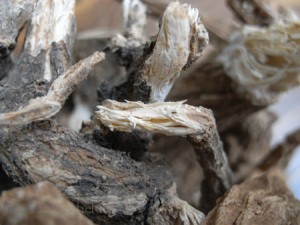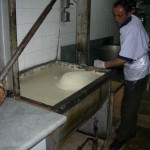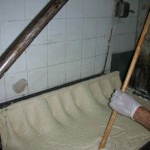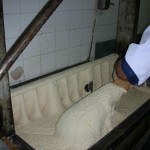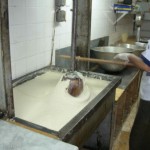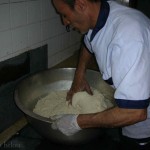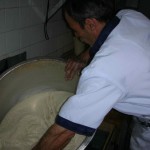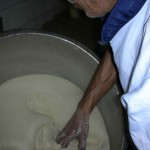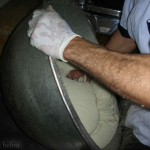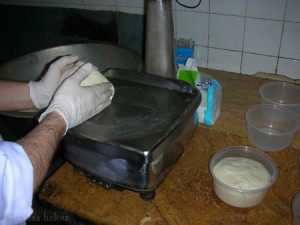8 Nov
[youtube]http://www.youtube.com/watch?v=rzsRTTiwWb4[/youtube]
I was exchanging tweets with Heidi Leon about belly dance — she has just taken it up — and I thought I’d tell her about Nadia (actually I meant Samia, see ps below) Gamal, possibly the greatest belly dancer of her era, perhaps of all times, and my favourite. I also have a weakness for Tahiya Carioca if only for the name which always made my sisters and I giggle when we were young in Beirut. She was our reference for anything vulgar. Am not sure why. She wasn’t, as you can see from the video below. We must have been stuck up bourgeois girls.
[youtube]http://www.youtube.com/watch?v=xM_E3ca7Rs8[/youtube]
In any case, I googled Nadia and found various links and videos. I like this one best. She is still very young and gorgeous, slim without being skinny; and as a bonus there is also Sabah in the video, also still very young and pretty.
In my days, there were two singing divas in Lebanon. Feyrouz, a heavenly voice but ugly with crooked teeth, and Sabah, a glamour puss with a sexy voice. Both are still alive and are old versions of their young selves. Feyrouz less scary than when she was young and Sabah still trying to hold on to those gorgeous looks with some help, and not from her creator! Watching Nadia and Sabah reminded me of my youth in Beirut when I hated both Arabic music and belly dancing. I only liked western pop music and to my shame, it was mostly French pop. Now, I love Omm Kulthum, Nadia Gamal, even Sabah but only when she was young and many others. As for pop music, it has been replaced by classical and opera. I wonder if I should look at myself closely in the mirror to see if I have aged like Sabah! As for gorgeous Nadia, she died quite some time ago, without I think turning into a caricature of herself. Have to check on that. In the meantime, I hope you enjoy this snippet of Egyptian high life when it was gay and sophisticated.
Ps. A Lebanese friend drew my attention to the fact that the dancer I am thinking of is not Nadia but Samia and here is a video of Samia Gamal. I can’t work out if the first video is Samia or someone else who’s almost as good but called Nadia. perhaps one of you will be able to tell me.
[youtube]http://www.youtube.com/watch?v=DJNHfmETiVk[/youtube]
4 Nov
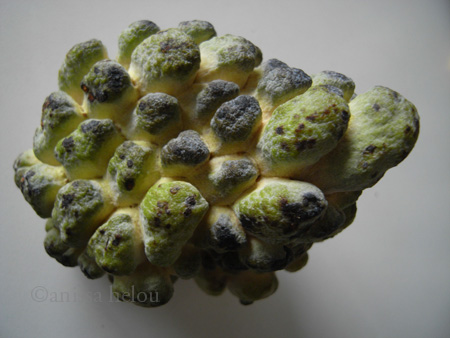
One of my all time favourite fruit. Looks like a pine cone but inside the rough skin are soft, creamy fleshy kernels enveloping shiny black seeds. The flesh is perfectly exquisite and the texture incredibly sexy. Totally irresistible except for one minor detail, the price which is fairly exorbitant in England. In Beirut, I could afford to eat one or two a day (my figure less) but here in London, custard apples will have to be an occasional treat. Still, not to be missed when in season which is now and until round about Christmas.
1 Nov

It’s been two years now that I happen to be in Lebanon and Syria during fig season. I didn’t plan it. It just happened but this meant that I could eat kilos and kilos of the most amazing figs; and more importantly, I could also feast on dozens of the tiny little creatures that feed on them.
Now, many of you will be horrified at the thought of eating little birds but I have to confess that I’ve been eating them from when I was a tiny tot, albeit a chubby one — always loved eating. The birds I ate then were shot by my uncles. I often accompanied them on their shooting expeditions, up in the mountains where the fig orchards were. And while they did the killing, I would go round looking for ripe figs to eat straight off the trees — the main reason why I went with them. Once my uncles shot several dozen birds, we’d drive back home and I’d help my mother, grandmother and aunt pluck and gut the tiny bodies, still warm from having just been alive while my uncles lit a charcoal fire. We kept the birds’ heads on but snipped the beaks off. Then we washed and seasoned the birds before threading them onto metal skewers to grill them over the charcoal fire. Every now and then we took the birds off the heat and pressed their bodies against pita bread to soak up the fatty juices. Then came the moment of ecstasy — a little exaggeration here although not far off — when I popped one whole little bird after the other into my mouth and crunched on the heads first to release the juicy brain.

At the club d’Alep: holding a little bird for Anna Sussman to snap
There has been talk for quite some time now of the birds becoming endangered, and of course, shooting them is illegal in Europe (although I did once eat ortolans in France) but this doesn’t stop them from being on the menu year after year, both in Lebanon and Syria. Here are a few photographs I shot in the last month. The best birds were not at Halim in B’hamdum, the temple for these creatures, but at a rather disappointing new Lebanese restaurant in downtown Beirut called Lebnaniyet (ex La Posta) where the birds were just perfect despite the fact they had been sautéed (I prefer them grilled). Everything about them was right: the size (not too big and not too small), the amount of fat (enough to make them really moist without them being too greasy), and the chef had kept the heads on — they take them off now at Halim.
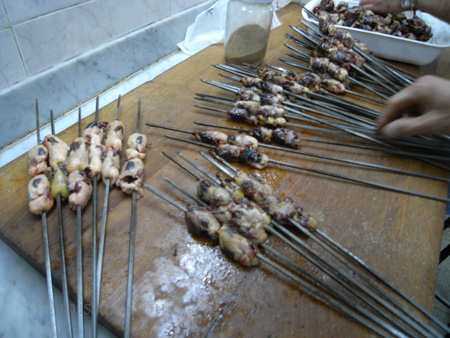
The different sizes you can order at Halim’s

a little out of focus but it gives you an idea of how many birds get served night after night at Halim’s
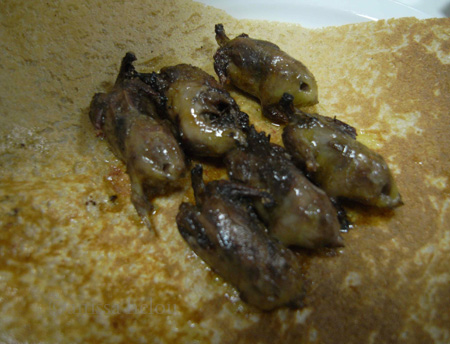
When they are grilled, the birds are served on marquq (handkerchief) bread
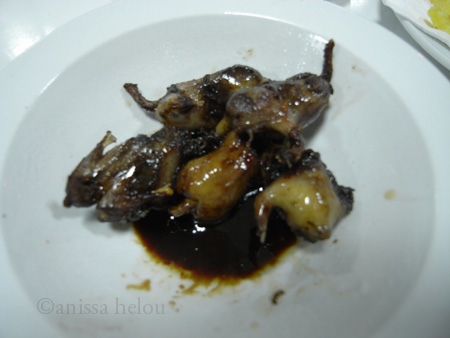
Or you can have them sautéed in pomegranate syrup
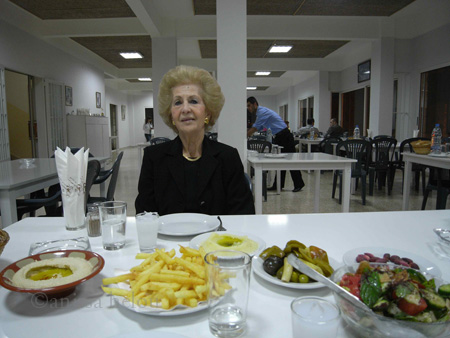
The simple mezze at Halim’s, with my beautiful mother looking a tad out of place in the modest café.
I guess I should really feel guilty and not eat these tiny creatures but they are one of the most heavenly foods ever, and to use a cliché, you only live once!
23 Sep
Everyone knows and loves halva. Well, perhaps not everyone loves halva but most people know it, the tahini one that is. Still, despite halva being fairly common now, few people know how it’s made. And I have to admit that I didn’t except for the one time, many many years ago, when I made it following a recipe from Leslie Kenton’s Raw Energy, and after I nearly broke my food processor trying to grind the sesame seeds, I ended up with a halva that bore no resemblance to any I ever had — there are other types of halva but more on that in future posts. In any case, it wasn’t until a few years ago that I finally saw halva being made, and what a revelation that was. I was being taken round the old souks of Aleppo by a wonderful character and a friend now, Hassan Khoja who is the burly man in the first video below, when we stopped at the shop of a friend of his, Omar Akesh, who sells tahini and halva which he produces in a sprawling and rather medieval space behind and above his shop. The only thing I knew then was that shirsh al-halaweh (meaning the root or vein of sweetness in Arabic, or plain soapwort root in English) was used in the making of halva (it is listed as one of the ingredients) although I wasn’t quite sure how. So here is what I found out.
[vimeo]http://www.vimeo.com/6714556[/vimeo]
First you need tahini, and to make tahini, sesame seeds have to be roasted, soaked, hulled and pressed, all of which are done by Omar’s men in the upstairs room. Then the soapwort roots have to be boiled to produce a brown liquid which when beaten miraculously turns into a brilliant white foam (because of the saponin). This foam is then mixed with sugar syrup to produce a meringue-like dip called natef, which is also served with karabij halab, a crumbly ‘cookie’ filled with pistachio nuts. In fact, the natef that goes with the karabij is slighly different from the natef that is used in halva but I can’t remember the proportions now — somewhere I have notes telling me the ratios. The natef is made in a kind of tin machine/beater (sadly the only part of the process which I didn’t manage to photograph or film) and once it’s ready, it is mixed with the tahini. The mixture is then processed in three different stages. First it is churned as you can see in the video above. Once the halva maker judges it ready to be beaten, he attaches a huge wooden pestle to an automated arm which will drop it into and lift it from the mixture at a regular pace, while he goes on scraping the halva from the sides and pestle to ensure perfect blending.
[vimeo]http://vimeo.com/6714660[/vimeo]
And now comes the final stage, which is the kneading of the halva. The mixture is transferred into a beautiful large metal bowl with a round bottom so that it can be rocked back and forth, and the halva maker kneads the mixture until it is smooth before portioning it out and packing it in plastic boxes.
[vimeo]http://www.vimeo.com/6714805[/vimeo]
At Omar Akesh, and elsewhere, you can buy halva plain, or you can choose the more expensive version with pistachio nuts. The nuts are usually pressed on the outside of the halva cake but there is a more luxurious version with more pistachio nuts that are kneaded into the mixture. Here is a close-up of soapwort as well as a few shots of the sequence of events in the making of halva.
